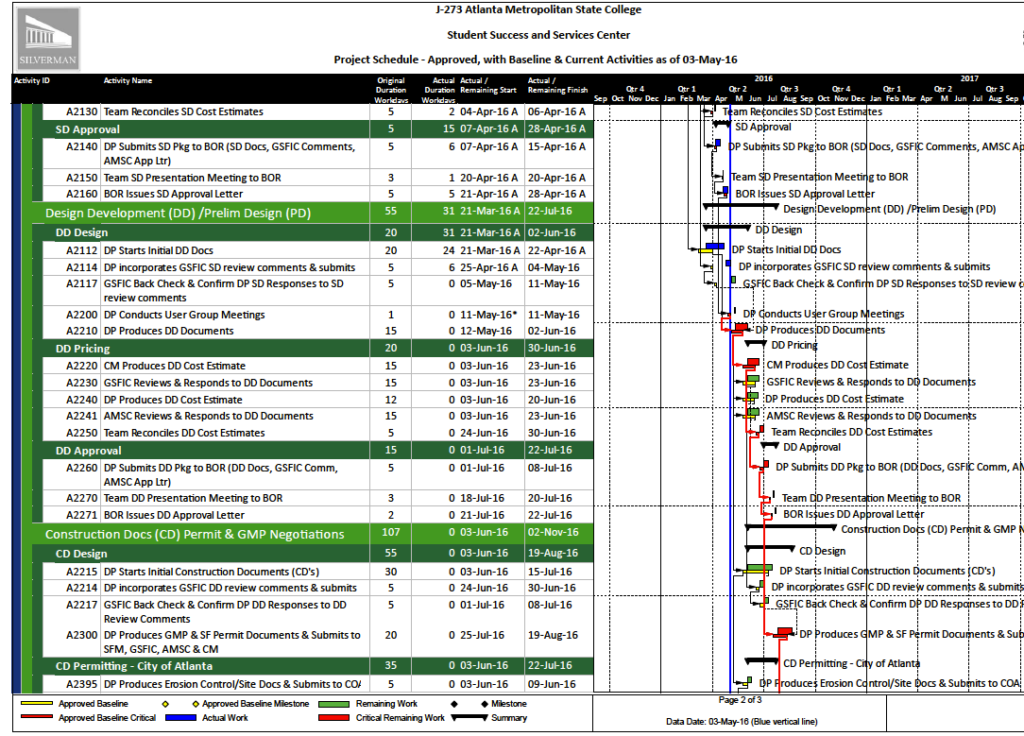Construction Term of the Month: Critical Path Method (CPM) Scheduling
Critical Path Method (CPM) is the most widely used scheduling technique and is often referred to as critical path scheduling. This scheduling technique used to plan and control a project and calculates the minimum completion time for a project along with the possible start and finish times for the project activities.
The critical path itself represents the set or sequence of predecessor and successor activities which will take the longest time to complete. The duration of the critical path represents the minimum length of time required to complete a project. Therefore, any delays along the critical path requires additional time to complete the project.
More than one critical path can exist, so completion of the entire project timeline could be lengthened by delaying activities along any one of the critical paths. For example, a project consisting of two parallel activities that each require three days would have each activity critical for a completion in three days.
The Critical Path Method combines all relevant information into a single plan. The plan defines the sequence and duration of operations, and depicts the interrelationship of the work elements required to complete the project.
Using critical path-specific software is key to effectively using the critical path method. Without software, unwieldy equations and complications drag down the entire planning process. The critical path method is incredibly common and a powerful tool used across the construction industry.
The Critical Path Method is only as powerful as the data used. If estimations are off or resources aren’t calculated correctly, the entire project may fail. It is imperative to use an experienced scheduler who has a breadth of knowledge relevant to the project time. taking ample time to plan and schedule out a project can save time and money down the road.
Resources:
- The Secret to the Critical Path Method in Construction
- Basic Components of a Critical Path Method Schedule
- The Ultimate Guide to the Critical Path Method


0